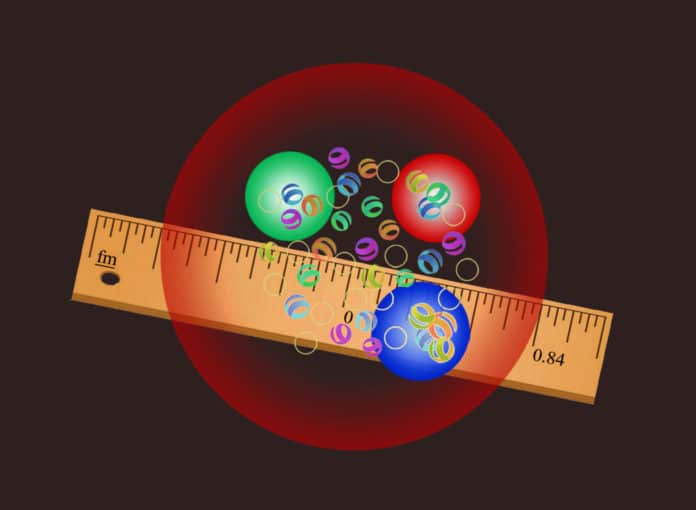In the 1990s, protons were thought to be 0.88 femtometers. But a new study by the University of Bonn and the Technical University of Darmstadt suggests that the protons are probably actually smaller than assumed since the 1990s.
This discovery comes as a surprise to the scientific community- some researchers even believed that the Standard Model of particle physics would have to be changed.
Physicists have created a method that allows them to analyze the results of older and more recent experiments much more comprehensively than before. This results in a smaller proton radius: 0.84 femtometers (a femtometer is a quadrillionth of a meter).
Prof. Dr. Ulf Meißner from the Helmholtz Institute for Radiation and Nuclear Physics at the University of Bonn said, “However, our analyses indicate that this difference between the old and new measured values does not exist at all. Instead, the older values were subject to a systematic error that has been significantly underestimated so far.”
Elastic scattering is one way to determine the radius of a proton. It involves bombarding an electron beam to a proton in an accelerator. When an electron collides with the proton, both change their direction of motion.
The larger the proton, the more frequently such collisions occur. Its expansion can therefore be calculated from the type and extent of the scattering.
Meißner said, “The higher the velocity of the electron beam, the more precise the measurements. However, this also increases the risk that the electron and proton will form new particles when they collide. At high velocities or energies, this happens more and more often.”
“In turn, the elastic scattering events are becoming rarer. Therefore, for measurements of the proton size, one has so far only used accelerator data in which the electrons had relatively low energy.”
Prof. Dr. Hans-Werner Hammer of TU Darmstadt said, “We have developed a theoretical basis with which such events can also be used to calculate the proton radius. This allows us to take into account data that have so far been left out.”
Using their method, scientists reanalyzed readings from older and very recent experiments, including those that previously suggested a value of 0.88 femtometers. However, with their method, the scientists arrived at 0.84 femtometers; this is the radius found in new measurements based on a completely different methodology.
The method also offers new insights into the fine structure of protons and their uncharged siblings, neutrons.
Journal Reference:
- Yong-Hui Lin, Hans-Werner Hammer and Ulf-G. Meißner: New insights into the nucleon’s electromagnetic structure; Physical Review Letters, DOI: 10.1103/PhysRevLett.128.052002
